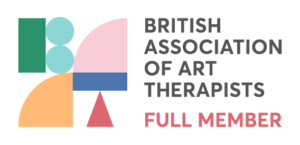What are the similarities and differences between art therapy and counseling
Art therapy and counseling are two types of therapy that can be used to support individuals who are struggling with emotional or mental health challenges. While there are some similarities between the two, there are also important differences that set them apart. In this blog post, we will explore the similarities and differences between art therapy and counseling.
Similarities Between Art Therapy and Counseling
Both art therapy and counseling are forms of psychotherapy that aim to support individuals in improving their emotional and mental health. Both involve working with a trained therapist who provides a safe and supportive environment for individuals to explore their thoughts and feelings. Both approaches may involve individual or group therapy sessions, depending on the needs of the individual.
In addition, both art therapy and counseling may involve the use of various therapeutic techniques and interventions. These may include cognitive-behavioral therapy, mindfulness, and other evidence-based therapies that are designed to support individuals in developing coping skills and improving their mental health.

Differences Between Art Therapy and Counseling
The primary difference between art therapy and counseling is that art therapy involves the use of art-making as a form of self-expression and exploration. In art therapy, individuals use various art materials to create artwork that represents their thoughts, feelings, and experiences. The therapist then works with the individual to explore the artwork and uncover insights into their emotions and behaviors.
Counseling, on the other hand, is typically focused on talk therapy. Individuals work with a therapist to discuss their thoughts, feelings, and experiences in a safe and supportive environment. The therapist may provide guidance and support in developing coping skills and strategies for managing difficult emotions.
Another important difference between art therapy and counseling is that art therapy may be particularly effective for individuals who have difficulty expressing themselves verbally. For example, individuals who have experienced trauma or who are struggling with anxiety may find it easier to express themselves through art than through words.
Which Approach is Right for You?
Deciding whether to pursue art therapy or counseling may depend on your individual needs and preferences. If you enjoy creative expression and feel that you may benefit from using art as a form of therapy, art therapy may be a good choice for you. If you prefer talk therapy or have specific issues you want to address, counseling may be a better fit.
In conclusion, both art therapy and counseling are valuable forms of therapy that can help individuals improve their emotional and mental health. While there are similarities between the two, there are also important differences that set them apart. If you are considering therapy, it may be helpful to explore both options and determine which approach is right for you.





